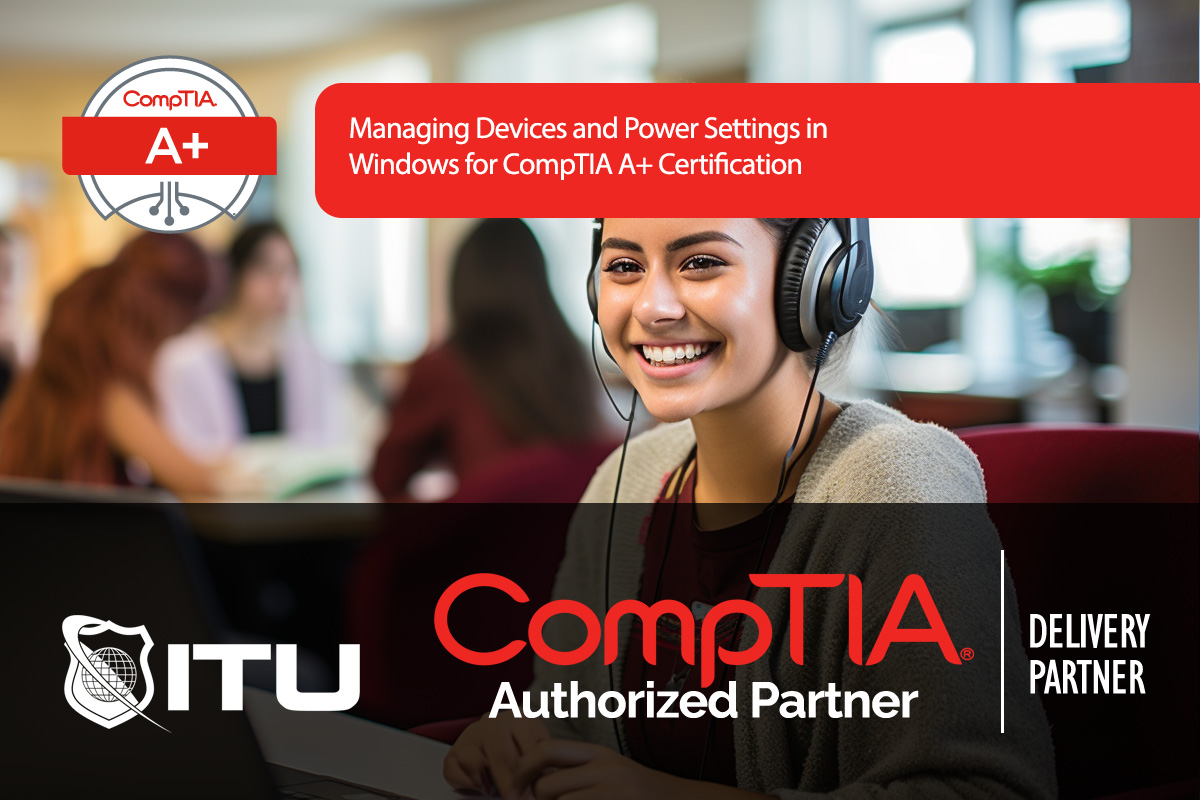What Is Fiber To The X (FTTx)
Definition: Fiber To The X (FTTx)Fiber To The X (FTTx) refers to a series of broadband network architectures that use optical fiber to replace all or part of the usual

Understanding how to manage power options and connected devices is essential for CompTIA A+ certification, especially as technicians troubleshoot and configure systems for optimal performance. Windows offers various settings in Control Panel and the Windows Settings app, allowing users to control power plans, adjust display options, manage connected hardware, and utilize Plug and Play for seamless device integration. This guide will cover power management, device configuration, Plug and Play, and related troubleshooting techniques.
Power management is crucial for energy efficiency, especially for laptops where battery life is a factor. Windows allows for customization of power plans to meet specific needs, providing options like standby, hibernate, and sleep modes.
To access Power Options:
For laptops, additional customization includes setting actions when the power button is pressed or when the lid is closed:
Typical options include:
Display and sleep settings allow users to manage when displays turn off or the computer enters sleep mode, helping save power:
Windows provides settings to customize display resolutions, sound settings, and manage connected audio devices.
Plug and Play (PnP) allows Windows to automatically detect and configure devices when connected, reducing manual setup steps. PnP technology automatically recognizes new or changed hardware, checks for drivers in Windows’ internal database, and installs necessary drivers.
If Windows does not recognize a device or drivers are missing, users can troubleshoot using Device Manager or Settings > Bluetooth & other devices. Look for:
Device Manager provides detailed control over connected devices and drivers, allowing for troubleshooting and manual configuration.
To update or install a driver:
Access power options by opening Control Panel, selecting “Power Options,” or by searching “Power Options” in the Start Menu. Here, you can choose from pre-set power plans or create a custom one, as well as set actions for the power button and lid close behavior on laptops.
Sleep mode saves the current session in RAM and uses minimal power for a quick wake-up. Hibernate saves the session to disk, using no power, ideal for longer downtimes. Shutdown fully powers off the system, closing all files and programs.
Plug and Play automatically detects and configures new hardware when connected to the computer. It installs device drivers from Windows’ internal library if available or prompts for a driver installation if needed, simplifying device management.
If a device is not recognized, open Device Manager, look for yellow exclamation points indicating issues, and use the troubleshooter. You can also try updating the driver manually by right-clicking on the device and selecting “Update Driver.”
Device Manager is a tool for viewing and managing hardware devices in Windows. Access it by right-clicking the Start Menu and selecting “Device Manager.” From here, you can update drivers, disable or enable devices, and troubleshoot hardware issues.
Lorem ipsum dolor sit amet, consectetur adipiscing elit. Ut elit tellus, luctus nec ullamcorper mattis, pulvinar dapibus leo.
$49.99 Original price was: $49.99.$16.99Current price is: $16.99. / month with a 10-day free trial
Definition: Fiber To The X (FTTx)Fiber To The X (FTTx) refers to a series of broadband network architectures that use optical fiber to replace all or part of the usual
Definition: MouseoverMouseover is a term used in web development and user interface design to describe an event that occurs when a user moves their mouse cursor over a particular element
Definition: Management ConsoleA Management Console is a software interface that provides administrators with a centralized platform to monitor, configure, and manage various IT resources and systems within an organization. These
Definition: Link FarmA link farm is a group of websites that all hyperlink to every other site in the group. The primary purpose of link farms is to manipulate search
Definition: Loopback PlugA loopback plug is a hardware device used in networking and telecommunications to test the transmission capabilities and diagnose the performance of network ports and devices. This simple
Definition: PerlPerl, an acronym for “Practical Extraction and Report Language,” is a high-level, general-purpose, interpreted programming language known for its text processing capabilities. Developed by Larry Wall in 1987, Perl
Definition: Integrated Performance ManagementIntegrated Performance Management (IPM) is a comprehensive approach to aligning an organization’s strategic objectives with its operational activities, performance metrics, and resource allocation. It involves the integration
Definition: Kubernetes StatefulSetA Kubernetes StatefulSet is a controller used to manage stateful applications, providing guarantees about the ordering and uniqueness of the instances (pods) it manages. Unlike a Deployment, a
Definition: JRubyJRuby is an implementation of the Ruby programming language atop the Java Virtual Machine (JVM). It allows Ruby developers to leverage the Java platform and its extensive libraries, thereby
Definition: Fog-to-Cloud (F2C) ComputingFog-to-Cloud (F2C) Computing is a hybrid computing paradigm that integrates fog computing and cloud computing to provide seamless, scalable, and efficient resource management and data processing from
Definition: Anycast RoutingAnycast routing is a network addressing and routing methodology in which data from a single sender is routed to the nearest or most optimal receiver from a group
Definition: JavaBeansJavaBeans are reusable software components for Java that can be manipulated visually in a builder tool. These components adhere to certain conventions and standards defined by the JavaBeans specification,
ENDING THIS WEEKEND: Train for LIFE at our lowest price. Buy once and never have to pay for IT Training Again.

Get ready for the updated 220-1201 & 220-1202 exams with our brand-new CompTIA A+ training—designed to help you pass with confidence and start your IT career strong. Access this course and over 2,900 hours of expert-led IT training when you sign up for any of our All-Access Passes. Don’t miss out—enroll now and start learning today!